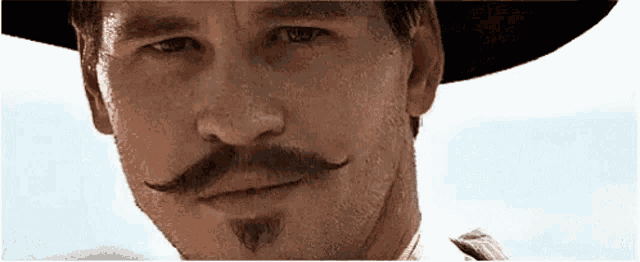Hi readers! Welcome to the first edition of Sealing Wax, Cabbages, and Kings — a place where we “talk of many things” — and go where the interesting facts take us.
I’ve been “researching for fun” since I was a kid reading the encyclopedia. No wonder I was a history major.
These days I use the internet — and my fairly extensive home library — for the same purposes. And I want to share what I learn with you!
I’m planning on this being a fun community full of curious people chatting about anything from the history of rural garden cemeteries to the Victorian Language of Flowers.
I hope you’ll join us.
The Man and I love watching movies from the 90’s when they pop up in the guide on YouTube TV.
I enjoy the nostalgia, slower edits, non-CGI effects and lack of Marvel Universe in older movies. Honestly, I’m pretty much done with 21st century Hollywood.
One recent weekend, Tombstone was on, so we decided to indulge in one of my favorite westerns. I mean, Val Kilmer crushes Doc Hollywood, right?
After the movie was over, I went down one of my little Wikipedia1 rabbit holes.
My subject: Wyatt Earp.
I’ll start by saying that I think that Kurt Russell is underrated as an actor — and he is fabulous in Tombstone. He really captures Earp’s grit and stone cold nature.
But I never realized that despite the film’s honest portrayal of many aspects of the Wild West — the lawlessness, the guns, the prostitutes, and the opium addictions — they cleaned up Wyatt’s character to make him a more appealing hero.
So indulge me in sharing a little more about Wyatt Earp — what made him tick and what’s left out of more traditional tellings of his life story.
The Earp family made a life of moving around, starting when Wyatt was a boy. Growing up before and during the Civil War, Wyatt’s nomadic life began in 1850 — when he was 2 years old — when his father pulled up stakes in Illinois to head for California.
It’s clear that Papa Earp had dreams of making money in the West — and passed it on to his sons.
The family made it about 150 miles into Iowa before illness halted their journey, so they purchased some land and stayed there until 1864. Wyatt’s brother, Virgil (played in Tombstone by the always awesome Sam Elliot) enlisted in the Union army during the war, but at thirteen, Wyatt was too young for the army.
As the war was winding down at the beginning 1864, Papa Earp decided that the time had come to head West once again. He organized a wagon train bound for California, arriving in San Bernardino in December.
Virgil found work as a stage driver — and Wyatt happily assisted his brother. Soon, Wyatt became a teamster and started transporting cargo all over the West as the Union Pacific railroad was built. His time at the railhead in Wyoming taught him how to box and gamble.
In 1868, Papa Earp moved the family back east to Missouri, where he became a town constable — beginning the Earp family’s association with law enforcement. Now a young man, Wyatt joined them a year later in 1869.
In Missouri, Wyatt courted and married a young woman named Urilla, who died of typhoid fever within the year. Sadly, she was also pregnant, and the child died too.
Wyatt fell into a bit of a depressive spiral, and began to have run-ins with the law.
In 1871, Wyatt was sued for embezzling funds meant for local schools. He was also arrested for being a horse thief — but before he could appear in court, Wyatt escaped through the roof of the jailhouse and made a run for it.
He ended up in Peoria, Illinois — a growing town with a freewheeling reputation and a penchant for vice. This would be a theme for the rest of Wyatt’s long life — moving from boom town to boom town chasing thrills and cash.
Peoria is where Wyatt’s association with selling sex began.
In February 1872, the Peoria police arrested Wyatt, his brother Morgan (RIP Bill Paxton), and several others after raiding a brothel. Wyatt was charged with “keeping and being in a house of ill-fame” and fined $202 plus court costs.
It wouldn’t be the last time.
Wyatt was arrested two more times in 1872. His September arrest was aboard the Beardstown Gunboat — a houseboat that had been turned into a floating brothel as a way to avoid law enforcement. It picked up “passengers” on the shore and floated around the Illinois River. The ultimate “pleasure cruise.”
His arrest and trial was documented in the local newspaper — with Wyatt being referred to as the “Peoria Bummer” and a man of “poor character” and “chronic lawbreaker.”
Wyatt and Morgan were both fined $443 — more than the other men who were arrested in the raid, leading historians to conclude that the judge saw them as pimps and not johns.
Soon after this arrest, Wyatt left Peoria and headed for the booming cow town of Wichita, Kansas.
What was he doing there?
Straight pimping.
Well, some historians believe that he was more of a bouncer in Wichita, but he worked at the brothel his brother James was running with his wife, Nellie.
I know. I seriously had no idea how rampant prostitution was in the West until I read this about Wyatt Earp’s life. I think I always sort of knew — with all the miners and cowboys and a dearth of women — but it’s always glossed over and somewhat romanticized in the movies and history books.
Wichita is also where Wyatt began his career in law enforcement.
While it seems strange that a pimp who was running a gambling saloon was also a local deputy, Wyatt had learned an important lesson: chaos and lawlessness aren’t good for business.
By 1876, Wichita’s big cattle boom — being the end of the line4 for drovers driving cattle up from ranches on the plains — was coming to an end.
Apparently the Texas Longhorns5 carried a tick that was infecting other breeds with Texas cattle fever, and Kansas ranchers wanted the longhorns quarantined.
The Kansas legislature put quarantine line through the state, ending Wichita as a cow town. Dodge City, in the far west part of Kansas, became the new cattle hub.
So Wyatt and James followed the cows — and the cash— to Dodge.
In the following years — 1876 to 1880 — Wyatt spent his time between Dodge City and the mining boom town of Deadwood, in the Dakota Territory.
Here he furthered his association with law enforcement and gained a reputation for bravery and escaping sticky situations.
He also received his first temporary commission as a U.S. Marshal in 1877, chasing Arkansas Dave Rudabaugh6 all the way to Fort Griffin, Texas after Dave robbed a railroad construction camp.
Fort Griffin is where Wyatt Earp met Doc Holliday, who told Earp that Rudabaugh had passed through but was headed back to Kansas.
By 1878, according to newspaper records, both Wyatt and Doc were in Dodge City.
Apparently Doc saved Wyatt’s life in a saloon shoot-em-up that year — the basis of their life long friendship.
By 1879, Dodge City had begun to “settle down” — losing that frontier edge that Wyatt adored.
In his own writings, he stated “In 1879 Dodge was beginning to lose much of the snap which had given it a charm to men of reckless blood, and I decided to move to Tombstone, which was just building up a reputation.”
Virgil was already in Tombstone, so Wyatt, his brother James, and their common law wives headed to the southwest through the New Mexico territory. Doc Holliday and his companion, Big Nose Kate, met them in Prescott.
They went on to Tombstone together, doing what the Earp family did: taking odd jobs and running small businesses in boom towns, mixed with law enforcement duties — as a few days before their arrival Virgil had been named U.S. Marshal for the Arizona Territory.
Morgan joined them in 1880, and the rest — the war with the Cowboys, Virgil’s injury, Morgan’s tragic death, and the Shootout at the OK Corral — is history.
After Tombstone and the Gunfight at the OK Corral, Wyatt became a bit of a celebrity, with the press monitoring his movements.
By 1882, Wyatt was in San Francisco with Virgil, who was receiving treatment for his mangled arm.
He was also reunited with Josephine “Sadie” Marcus7, an actress and likely prostitute, who he had become infatuated with in Tombstone.
Soon after, Josephine began using the name “Josephine Earp” and was Wyatt’s common law wife for the next 46 years.
From San Francisco, the two traveled the Old West, going from boom town to boom town, looking for profit and excitement. It seemed to be in Wyatt’s blood.
They moved from Idaho to San Diego, from San Francisco to the Klondike — Earp’s reputation proceeding them wherever they went. They actually opened one of the first luxury saloons in Alaska in 1899.
By 1911, Wyatt and Josephine had settled near Los Angeles. Her gambling and his drinking meant that most of their money was gone.
They bought a small cottage and spent summers in Los Angeles and the rest of the year working their claims in a desert gold mine.
Wyatt also worked as a consultant on early silent movie westerns, and began working with a writer on his autobiography in 1925.
His health began to fail in 19288, and Wyatt Earp died on January 13, 1929, at the age of 80.
Among his pall bearers were silent film cowboys William S. Hart and Tom Mix.
Wyatt Earp is buried in Hills of Eternity Memorial Park, a Jewish9 cemetery near San Francisco.
That’s it for this edition, readers. Thanks for joining me on this little trip to the Old West.
Did anything surprise you? Let me know in the comments!
Next up — the Victorian Language of Flowers. Until then, Happy Learning!
Even my favorite hardass college professor told me that Wikipedia was great for confirming basic facts, just don’t use it as an academic citation or for theory.
About $520 today
Just over $1,100 today
From Wichita, the cattle were herded onto trains to meet their fate at meat packing plants in Chicago.
The cattle, not the football team
Played by Christian Slater in Young Guns II
Played by Dana Delaney in Tombstone.
The days before antibiotics when a UTI could kill an old man.
Josephine was Jewish.









Thanks. Informative and entertaining. ✌🏻